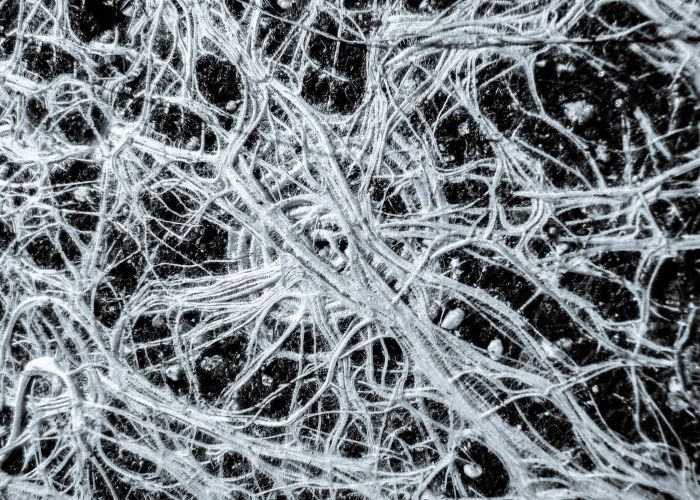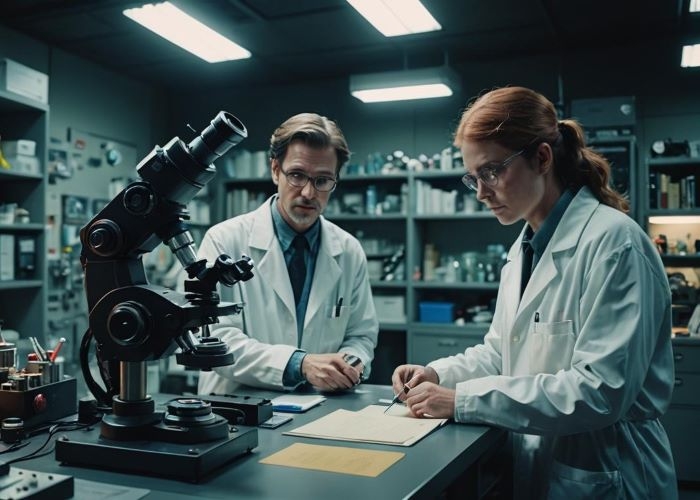Mycorrhizae and Cannabis: An Invisible Ally
Cannabis cultivation is not just about planting seeds and waiting for a harvest. There is something more to it. Almost mystical, something that requires a sophisticated understanding, intuition, and yep, occasionally, a miracle. But what if I told you that one of those wonders is right under your feet? Please welcome mycorrhiza! A mysterious ally of plants, hiding behind the scenes, but powerful enough to drastically affect the results of your efforts. This invisible friend of the cannabis plant may be the ingredient you've been missing for true excellence. Join us as we dive deep into the unexplored world of underground connections.

What's Behind the Term ‘Mycorrhiza’?
Let's first find out what mycorrhiza is to understand how it can be your faithful companion. Mycorrhiza is an amazing fusion, a friendship if you will, between plant roots and fungi. The name comes from ancient Greek and literally translates to ‘mushroom root’—and it's not just a fancy image. This symbiotic relationship has existed for millions of years. It is so strong that it can be found in fossils dating back more than 400 million years. Can you imagine it? Fungi have witnessed the evolution of life on Earth and have become an integral part of it.
How Does This Symbiosis Work?
Mycorrhizal fungi team up with plant roots to form a dense network of hyphae – thin threads that penetrate the soil and extend the plant's root system. This network is good at capturing water and nutrients from the soil in places inaccessible to a typical root system. The plant, in turn, generously shares with the fungi the carbohydrates it produces through photosynthesis. This creates a win-win situation for both partners: the plant gets access to a greater amount of nutrients, and the fungi receive the energy they desperately need.
Different Types of Mycorrhizae: Which One Should I Choose?
There are several types of mycorrhizae, but for cannabis, arbuscular mycorrhiza (AM) and ectomycorrhiza (ECM) are of primary importance. Ectomycorrhiza usually attaches to the root systems of trees, while arbuscular mycorrhiza prefers herbaceous plants such as cannabis. AM-fungi penetrate the root cells of the plant and form arbuscules – microscopic structures where nutrient exchange takes place. They are particularly efficient at absorbing phosphorus and other micronutrients, making them the perfect choice for your cannabis garden.
Why Does Cannabis Need an "Underground Friend"?
Now that we have an understanding of what mycorrhizae are, let's move on to why they are so important for cannabis. Roots are the cannabis plant's lifeline, connecting it to the soil and providing essential nutrients and water. The more developed and healthier the roots are, the stronger and more robust the plant will be. This is where the mycorrhiza acts as a superhero to save the whole deal. Here are some of the key benefits:
Additional Feeding
Mycorrhiza greatly increases the availability of vital elements such as phosphorus, nitrogen, and potassium. Cannabis needs these elements to develop abundant and thick flowers.
Stress Resistance
Mycorrhiza helps the plants withstand adverse conditions, such as drought or high soil salinity. The fungal hyphae can penetrate deep into the soil, where water remains available even under the harshest conditions.
Improved Soil Structure
Mycorrhizae promote soil aggregation, improving soil structure and aeration. This allows the roots to breathe fully and absorb nutrients more effectively.
Biological Protection
Mycorrhiza acts as a natural barrier against pathogens, such as fungal infections, that can cause damage to the root system. Pathogens just cannot make their way to the roots in a healthy mycorrhizal network.
The Science Proves

While the use of mycorrhizae in cannabis cultivation is a relatively new practice, the findings are already impressive. In 2022, the research conducted by scientists from Khon Kaen University in Thailand and Wageningen University in the Netherlands showed that cannabis plants interacting with mycorrhizal fungi showed significant increases in biomass and higher concentrations of THC and CBD cannabinoids. What's more, the mycorrhizae application not only matched the efficiency of synthetic fertilizers. In some cases, it outperformed them. This discovery offers a sustainable and environmentally friendly alternative to chemical fertilizers.
How to Get Mycorrhiza Working?
Now that you know how beneficial mycorrhiza is, the question is how to introduce this natural symbiosis into your cannabis cultivation. Here are a few practical guidelines to follow:
Inoculant Selection
The market offers a variety of mycorrhizal inoculants, but they're not all equal. You'll want to focus on products that contain the fungi species Glomus intraradices and Glomus mosseae. These have been proven to be very effective.
Proper Application
It is important to apply the inoculant so it directly contacts the plant roots. This can be done when planting seeds or transplanting seedlings.
Maintenance of the Mycorrhizal Network
It is crucial to create favorable conditions for the mycorrhiza to function properly. These include maintaining optimal soil moisture and avoiding excessive use of chemical fertilizers and pesticides, which can potentially be harmful to fungi.
Routine Monitoring
Like any other plant, cannabis requires regular attention and care. Keep an eye on the condition of the roots and the plant in general so that any problems can be promptly identified and addressed.
The Bottom Line
Mycorrhiza is not just another item in your gardener's toolbox. It is a powerful ally and a game changer for the entire process of growing cannabis. Mycorrhiza is an excellent choice to increase the vitality, health, and performance of your plants, making your garden sustainable, organic, and environmentally friendly. By introducing mycorrhiza to your garden now, you are investing in a bountiful plant that will thrive like no other! Bring this tiny but mighty force into your gardening arsenal, and you'll see your cannabis bursting with new colors.
![[``]](/wa-data/public/site/themes/kadama/img/kadama_logo.svg)




